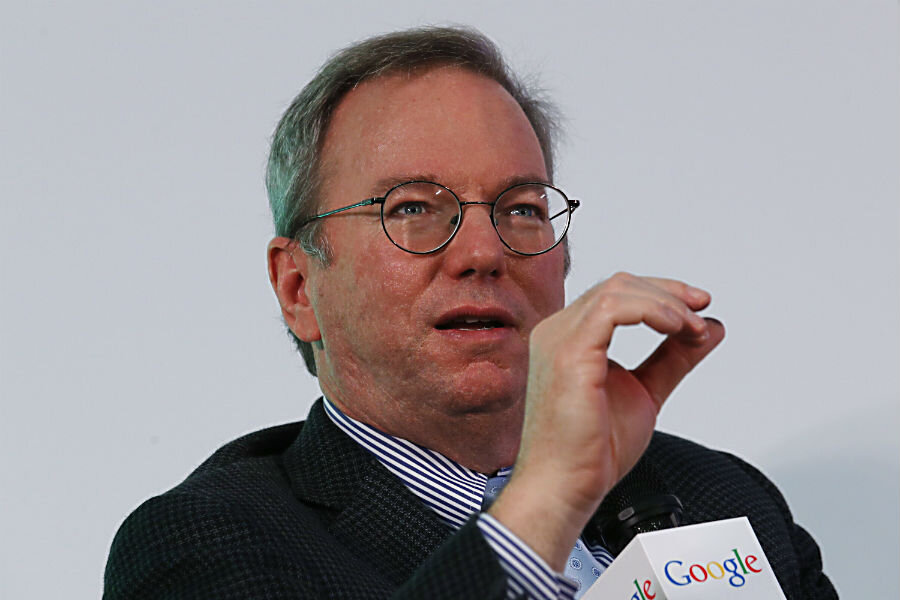Can Google wirelessly connect homes to high-speed internet?
Loading...
Google may be planning to make its Fiber internet wireless, allowing more flexibility for the high-speed service – and more potential customers for the tech behemoth.
Eric Schmidt, executive chairman of Google parent Alphabet, Inc., told shareholders at the conglomerate's annual meeting on Wednesday that the move toward a wireless Fiber is under strong consideration. He told attendees he had discussed the idea with Alphabet chief executive officer Larry Page and chief financial officer Ruth Porat, "to give you an idea of how serious this is," according to The Wall Street Journal.
Google Fiber is the technology company's super-fast fiber optic internet option that aims to deliver speeds 10 to 100 times faster than most internet service providers currently offer. The utility, which also offers home phone connections, has been slow to roll out – since its 2011 start in Palo Alto, Calif., Fiber has expanded, or planned to expand, to about a dozen metropolitan centers.
The reason for the service's slow growth comes, in part, from the technology's basic requirements: for Fiber to connect to customers, physical fiber optic lines must be laid underground or along existing communications conduits. Once people are linked to the Fiber network, Google can offer internet speeds of up to 1,000 megabits per second. But physical constraints on the fiber lines – the so-called last mile problem – can also leave individuals with a bandwidth bottleneck at their home or business.
If Alphabet decides to move forward with a wireless beaming option, though, the limits of physical fiber installation and the last mile could be fixed with the developing technology.
The beaming tech would be similar to the Wi-Fi signals that have been around for years, offering users a local connection operating on ultra- to super-high radio frequencies. The potential Fiber wireless connection would utilize extremely high frequency radio bands, called millimeter wave (mmW) technology, which could be the missing link in providing Fiber access to more people while maintaining the platform's high speeds.
"There appears to be a wireless solutions [sic] that are point to point that are inexpensive now because of the improvements in semiconductors," Schmidt told shareholders, according to USA Today. "These point to point solutions are now cheaper than digging up your garden and so forth," he added, referencing the challenge of integrating Fiber in built-up and populated areas.
"The huge advantage of millimetre wave is access to new spectrum because the existing cellphone spectrum is overcrowded. It's packed and there's nowhere else to go," University of Washington electrical engineering professor Jacques Rudell told The Guardian in January, discussing the use of mmW tech for Google's Project Skybender, which aims to provide internet through solar-powered drones.
The use of mmW does have its limitations similar to Wi-Fi, including blocking by buildings and other solid objects, signal weakening due to weather conditions like rain, and absorption by gases in the air. But over shorter ranges mmW waves could provide a solution to Fiber's last mile and physical networking problems and allow the service to "reach houses and users that are in lower density settings," places "where fiber becomes too expensive," as Craig Barratt, the senior vice president of Access and Energy (the Alphabet group behind the Fibers service), told Recode.
Google Fiber is proceeding with testing variations on wireless internet beaming in Kansas City, the first major location to originally be connected to the service.
At the shareholders meeting, Schmidt also elaborated on other potential Alphabet ventures including 3D printing buildings, plant-based substitute meat, and further advances in AI and VR tech, according to the Journal.








